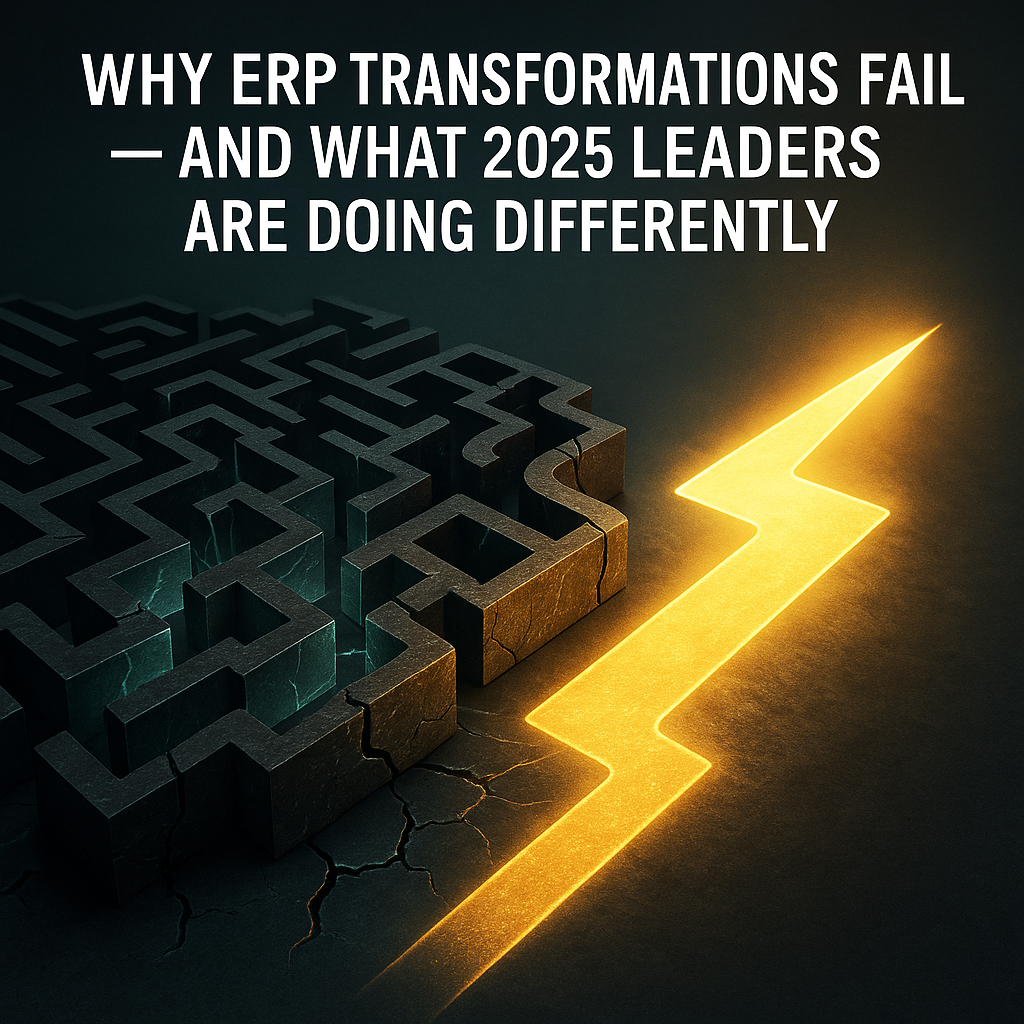
Why ERP Transformations Fail — And What 2025 Leaders Are Doing Differently
ERP transformations remain among the most complex initiatives an organization can undertake. Despite advances in cloud platforms and implementation methodologies, failure rates still hover around 55–75% depending on the study. In 2025, the difference between failure and success comes down not to technology, but to leadership, alignment, and execution discipline.
1. The Common Reasons for Failure
Most ERP programs stumble due to:
- Unclear vision and scope creep that balloon costs and timelines.
- Poor change management and lack of user adoption.
- Underestimating data migration and integration complexity.
- Choosing the wrong partner or talent gaps.
- Insufficient governance to keep projects on track.
2. What Leaders Are Doing Differently in 2025
Forward-thinking organizations are rewriting the ERP playbook by:
- Investing in program assurance early — embedding independent oversight.
- Focusing on people before technology — prioritizing change management, user training, and adoption metrics.
- Building hybrid delivery models — blending internal talent, contractors, and partner expertise.
- Leveraging analytics and dashboards — enabling real-time decision-making across finance, supply chain, and HR.
- Selecting transformation partners carefully — aligning vendors with culture, not just price.
3. The Shift to Continuous Transformation
Rather than treating ERP as a one-time project, leaders in 2025 are embracing:
- Iterative rollouts that reduce risk.
- Evergreen ERP strategies aligned with vendor cloud roadmaps.
- Continuous improvement teams that optimize processes long after go-live.
4. The Bottom Line
ERP transformation failures are not inevitable. With stronger governance, the right partnerships, and a people-first approach, today’s leaders are proving ERP can deliver measurable business value — not just technology change.
